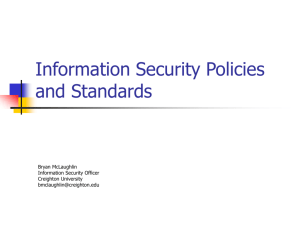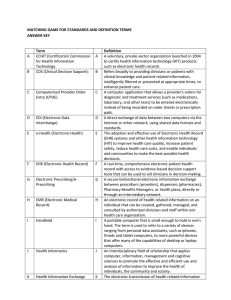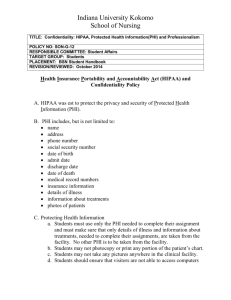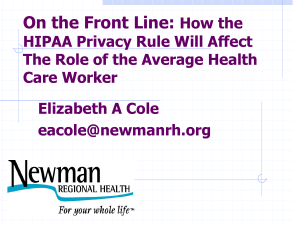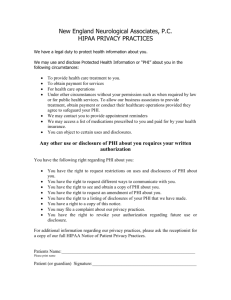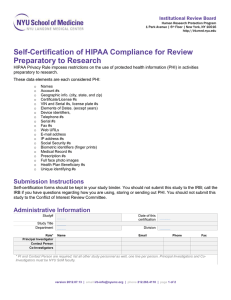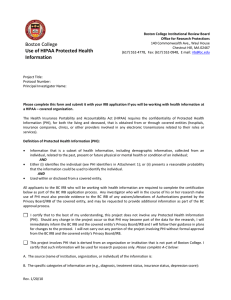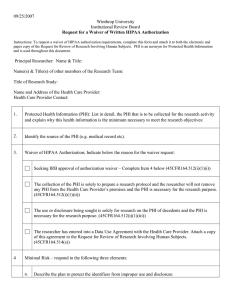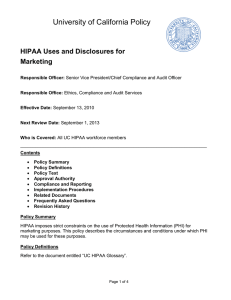Document 11147625
advertisement
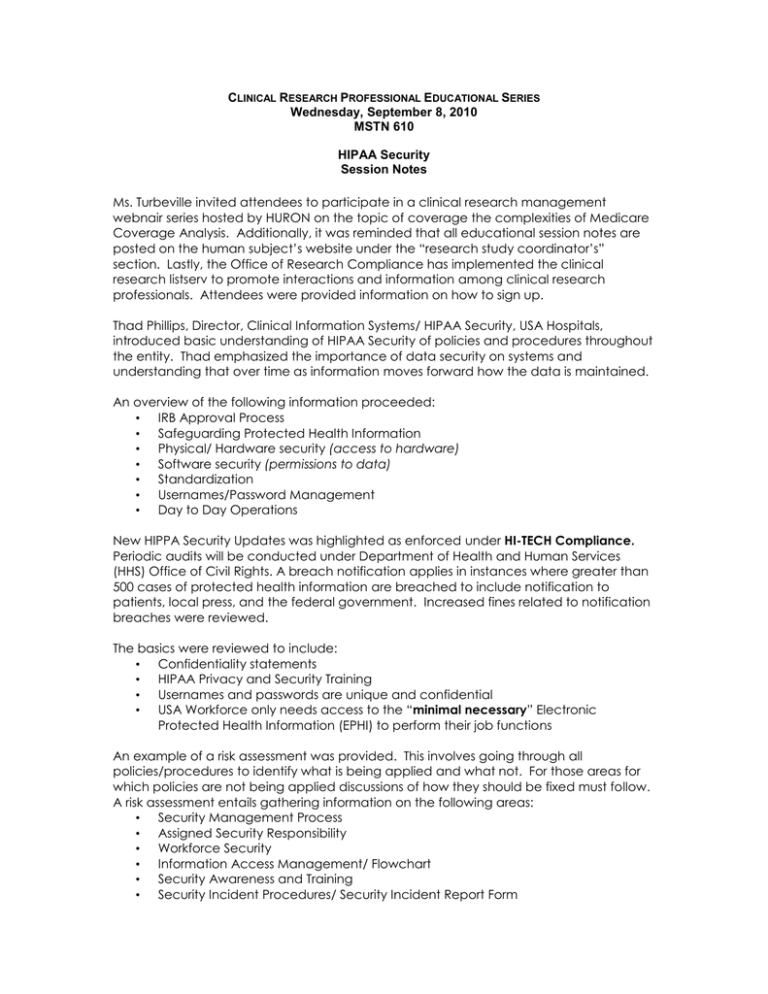
CLINICAL RESEARCH PROFESSIONAL EDUCATIONAL SERIES Wednesday, September 8, 2010 MSTN 610 HIPAA Security Session Notes Ms. Turbeville invited attendees to participate in a clinical research management webnair series hosted by HURON on the topic of coverage the complexities of Medicare Coverage Analysis. Additionally, it was reminded that all educational session notes are posted on the human subject’s website under the “research study coordinator’s” section. Lastly, the Office of Research Compliance has implemented the clinical research listserv to promote interactions and information among clinical research professionals. Attendees were provided information on how to sign up. Thad Phillips, Director, Clinical Information Systems/ HIPAA Security, USA Hospitals, introduced basic understanding of HIPAA Security of policies and procedures throughout the entity. Thad emphasized the importance of data security on systems and understanding that over time as information moves forward how the data is maintained. An overview of the following information proceeded: • IRB Approval Process • Safeguarding Protected Health Information • Physical/ Hardware security (access to hardware) • Software security (permissions to data) • Standardization • Usernames/Password Management • Day to Day Operations New HIPPA Security Updates was highlighted as enforced under HI-TECH Compliance. Periodic audits will be conducted under Department of Health and Human Services (HHS) Office of Civil Rights. A breach notification applies in instances where greater than 500 cases of protected health information are breached to include notification to patients, local press, and the federal government. Increased fines related to notification breaches were reviewed. The basics were reviewed to include: • Confidentiality statements • HIPAA Privacy and Security Training • Usernames and passwords are unique and confidential • USA Workforce only needs access to the “minimal necessary” Electronic Protected Health Information (EPHI) to perform their job functions An example of a risk assessment was provided. This involves going through all policies/procedures to identify what is being applied and what not. For those areas for which policies are not being applied discussions of how they should be fixed must follow. A risk assessment entails gathering information on the following areas: • Security Management Process • Assigned Security Responsibility • Workforce Security • Information Access Management/ Flowchart • Security Awareness and Training • Security Incident Procedures/ Security Incident Report Form • • • • • • • • • • • • • • Contingency Plan (i.e., virus, storm, network disconnected, theft, etc.) Evaluation Business Associate Agreements Facility Access Controls (badge ID) Workstation Use (server set-up w/ database with multiple doctors/nurses updating for research purposes, want to make sure they are set-up appropriately especially if they are set-up off site) Workstation Security (anti-virus programs) Device and Media Controls Access Control Audit Controls (huge push to implement electronic health records) Integrity of data Person or Entity Authentication Transmission Security (who has access to system and where at) Use of E-mail to Transmit Health Information (if transmit outside the USA email system it is not safe once it leaves, it is open. Insert disclaimer at end of email!) Documentation (systems in place, applications used, protections in place. modifications to systems) It is important to know the security level of your database systems and any contingency plans that may be implemented for access/use of such information. Auditing of your systems is important, you do not want your password/access information available at your desk top, physical safeguards of the information is also important in conducting a periodic check-up. Security incident reports should be completed if there is a problem and helps mitigate any potential risks in systems that house electronic PHI. The IRB process has a process to push through information for review/approval if projects are utilizing electronic PHI. The research database form captures the information but still not well defined for physical hardware/software security. The investigator has an obligation to insure that the use and disclosure of PHI is in compliance with HIPAA Policies. Those discussed were: • Maintaining applicable security for the database, including physical security and access control; • Control and manage the access, use and disclosure of PHI, including verifying appropriate IRB approvals and patient authorizations; and • Any PHI in the database used for treatment or payment purposes must be a duplicate and the original must be included in the patient’s medical record.

